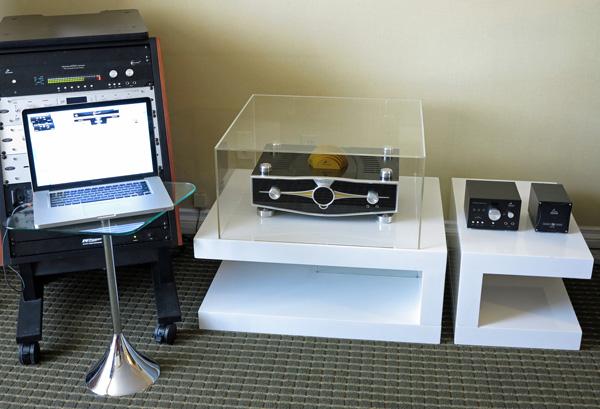| Columns Retired Columns & Blogs |
Sunlight side-lighting the subject is tough to improve upon. So many show images use on-camera flash and it usually makes things worse, as it often does for other photography.
It's fine as-is for what it needs to be.

The Rubicon has the same 384k DAC and 64-bit clocking and jitter management technologies as in the much less expensive Zodiac Gold "HD Audiophile 384kHz DAC" ($3895) plus the Voltikus power supply ($995). This much smaller, less imposing unit also boasts a preamp, headphone amp, and remote control. (The Zodiac 192kHz DAC, and Zodiac+ Mastering DAC, one of which is shown to the right of the Rubicon, are available at even lower prices, and reportedly sound excellent). The Rubicon, however, is claimed to deliver superior sound because DAC, preamp, and everything else listed above are housed together, obviating the need for lots of extra cables.
Most impressive was Marcel James' demo where a 192kHz digital transfer of an analog original sounded remarkably close to the vinyl itself; so close that I could not distinguish the difference in fast back and forths. That is, as far as I could tell. Hooked up to pro gear and speakers that I was unfamiliar with, the system was played quite loudly, with an aggressive sound that I could not warm to. The Zodiacs and Rubicon are definitely units that I hope to evaluate in my reference system, with material I'm familiar with.

Sunlight side-lighting the subject is tough to improve upon. So many show images use on-camera flash and it usually makes things worse, as it often does for other photography.
It's fine as-is for what it needs to be.

I had to buy a new camera after my Canon G11 dematerialized at the Dolby 2.0 Forum I covered for Stereophile. Gone too was the Canon flash. I bought a Vivitar for my new Canon GX 1, but it wasn't giving off enough light in bounce mode, and I didn't have time to try to reach Vivitar or Canon to figure out what to do. (All this happened shortly before T.H.E. Show). Mike Mount who works at Canon offered invaluable assistance, showing me how to adjust flash and exposure strength in the camera. But those controls don't work for an add-on flash. Hence, a lot of my photos that you'll see further on in this blog have been exposure and color-corrected to the best of iPhoto's ability. And so it is.
jason